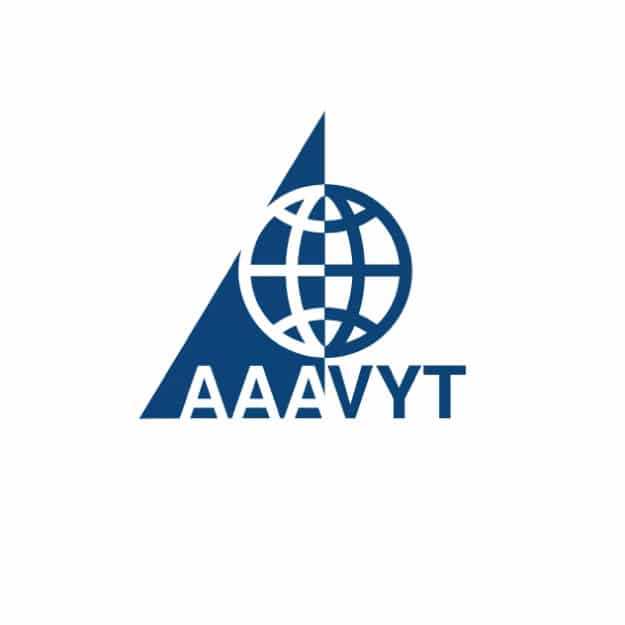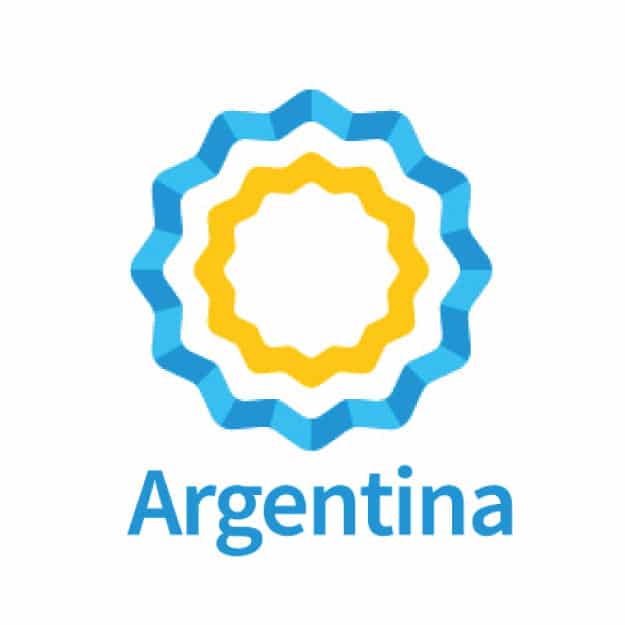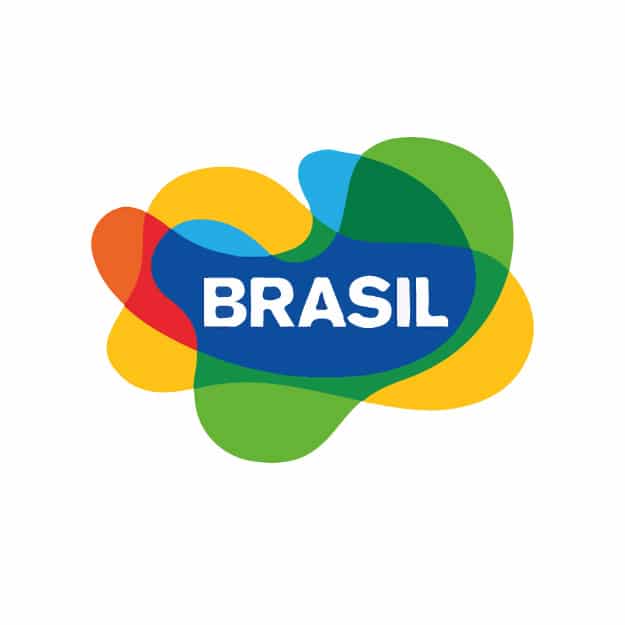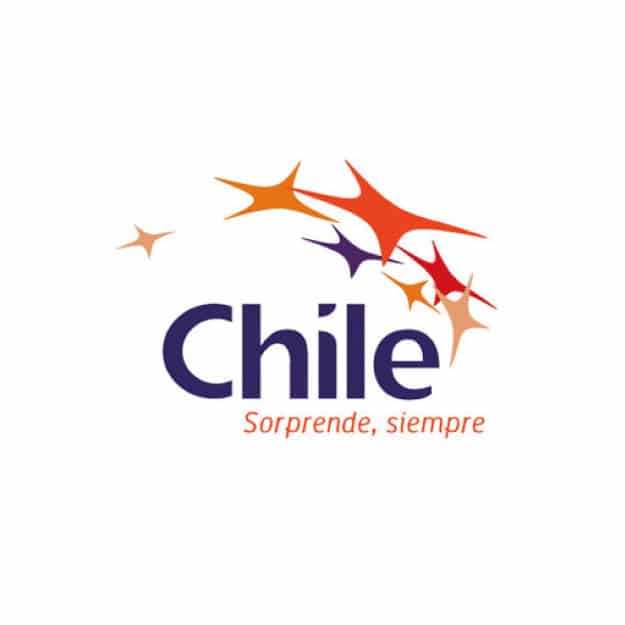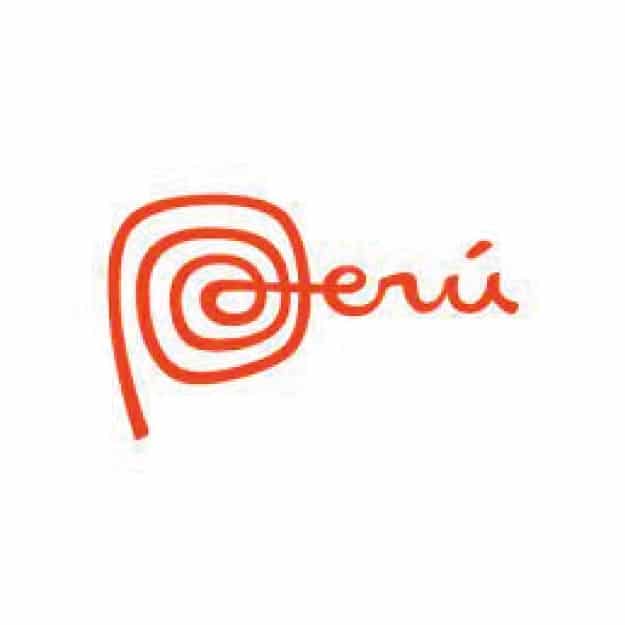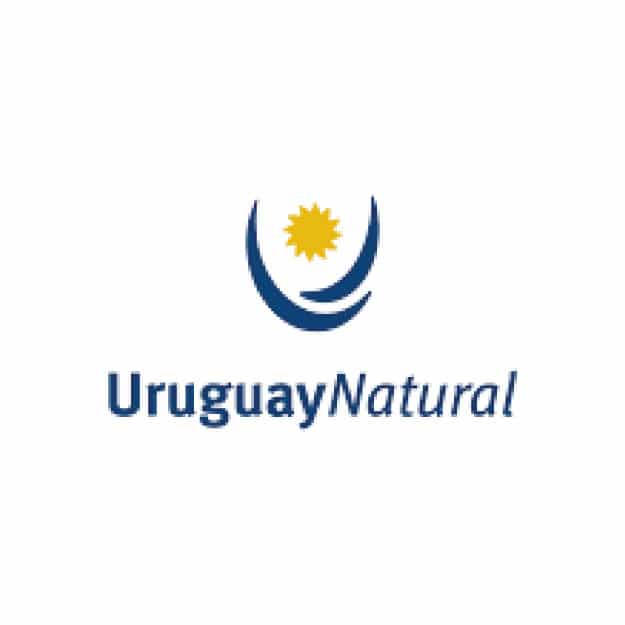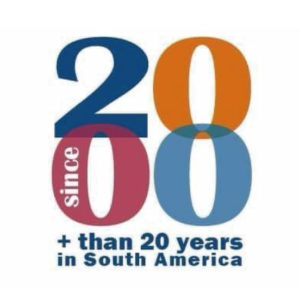Easter Island Map: where is Easter Island located?
Easter Island is one of the most remote areas on the planet. It´s located 3756 km from the Chilean coast, and to reach the island it´s necessary to take a 5:30 hour flight from Santiago de Chile in South America.
Why Easter Island is so special?
There is no other inhabited place in the world that is as isolated in the sea as Chilean Polynesia. Explore Rapa Nui, its beaches with pink sand, the volcanoes and grasslands that compose it, and its more than 1,000 moai that were silent witnesses to a complex society. Discover the intriguing culture of the Rapa Nui people during the Tapati, a traditional festival that takes place in February, in which the skills of the various local teams are put to the test.
But let me return to our first question. Where is Easter Island located. The island is usually visited as part of trips in Argentina and Chile, included in many tourist programs, or as a side trip from Santiago, but few know that Easter Island is located 3756 km from the American continent, and from the coasts of Chile. The following map clearly shows us how far it is from the continent and Chile, the country to which it belongs.
Easter Island Map: Easter Island location map

Easter Island location map:
Is Easter Island in South America or Polynesia?
Located in the Pacific Ocean, Easter Island is located in Polynesia. It´s part of a South American country because in fact, it´s a Chilean island that has always been shrouded in mystery by its popular moais, the famous Easter Island statues, or head bodies. These huge stone heads that they erect from the ground belong to the ancestral culture of the Rapanui, the ethnic group that inhabited the island in its origins. Its discovery gave rise to numerous hypotheses, currently unsolved. Recent archaeological work on Easter Island confirmed that, under the heads and torsos of the Moai, were the bodies of each one of them, buried in the earth.
Easter Island location:
How remote is Easter Island?
Well, very. It´s one of the most remote places in our planet. In fact, Easter Island is one of the world’s most isolated inhabited islands. Its closest inhabited neighbours are the Chilean Juan Fernandez Islands, located at 1,850 km (1,150 mi) to the east. And the nearest continental point lies in central Chile near Concepción City, at 3,512 kilometres (2,182 mi). Amazing isn´t it?
Easter Island’s latitude is similar to that of Caldera, Chile, and it lies 3,510 km (2,180 mi) west of continental Chile at its nearest point (between Lota and Lebu in the Biobío Region). Isla Salas y Gómez, 415 km (258 mi) to the east, is closer but is uninhabited. The Tristan da Cunha archipelago in the southern Atlantic competes for the title of the most remote island, lying 2,430 km (1,510 mi) from Saint Helena island and 2,816 km (1,750 mi) from the South African coast.
The island is about 24.6 km (15.3 mi) long by 12.3 km (7.6 mi) at its widest point; its overall shape is triangular. It has an area of 163.6 km2 (63.2 sq mi), and a maximum elevation of 507 m (1,663 ft) above mean sea level. There are three Rano (freshwater crater lakes), at Rano Kau, Rano Raraku and Rano Aroi, near the summit of Terevaka, but no permanent streams or rivers.
So, no doubt, it´s one of the most remote places you can find on earth.

The Moais: the Easter Island heads
The moais, the gigantic statues of Easter Island, are maybe the most important expression of Rapanui sculptural art and have become its hallmark. However, despite their worldwide fame and the multitude of studies carried out on them, there are still many unsolved questions surrounding these stone giants.
What is a Moai? The statues of rock on Easter Island
To explain what´s a Moai, let me start with a bit of history. Oral tradition tells that the art of sculpting stone statues was already known by the first Polynesian settlers who arrived after the expedition, of King Hotu Matu’a and the seven explorers, which departed from the land of Hiva (between 400 and 800 ad). There is a manuscript called Pua A Rahoa, which narrates the forgetfulness of said Polynesian inhabitants of a moai named Oto Uta on the beaches of Hiva, which they went to look for to bring it to the island.
The monumental architecture of Rapa Nui is the product of a model widely diffused in Polynesia, in particular, in the Marquesas, Tahiti, and Raivava’e islands, where stone structures and sculptures are found that appear to be the prototypes of the ahu and the Moais.
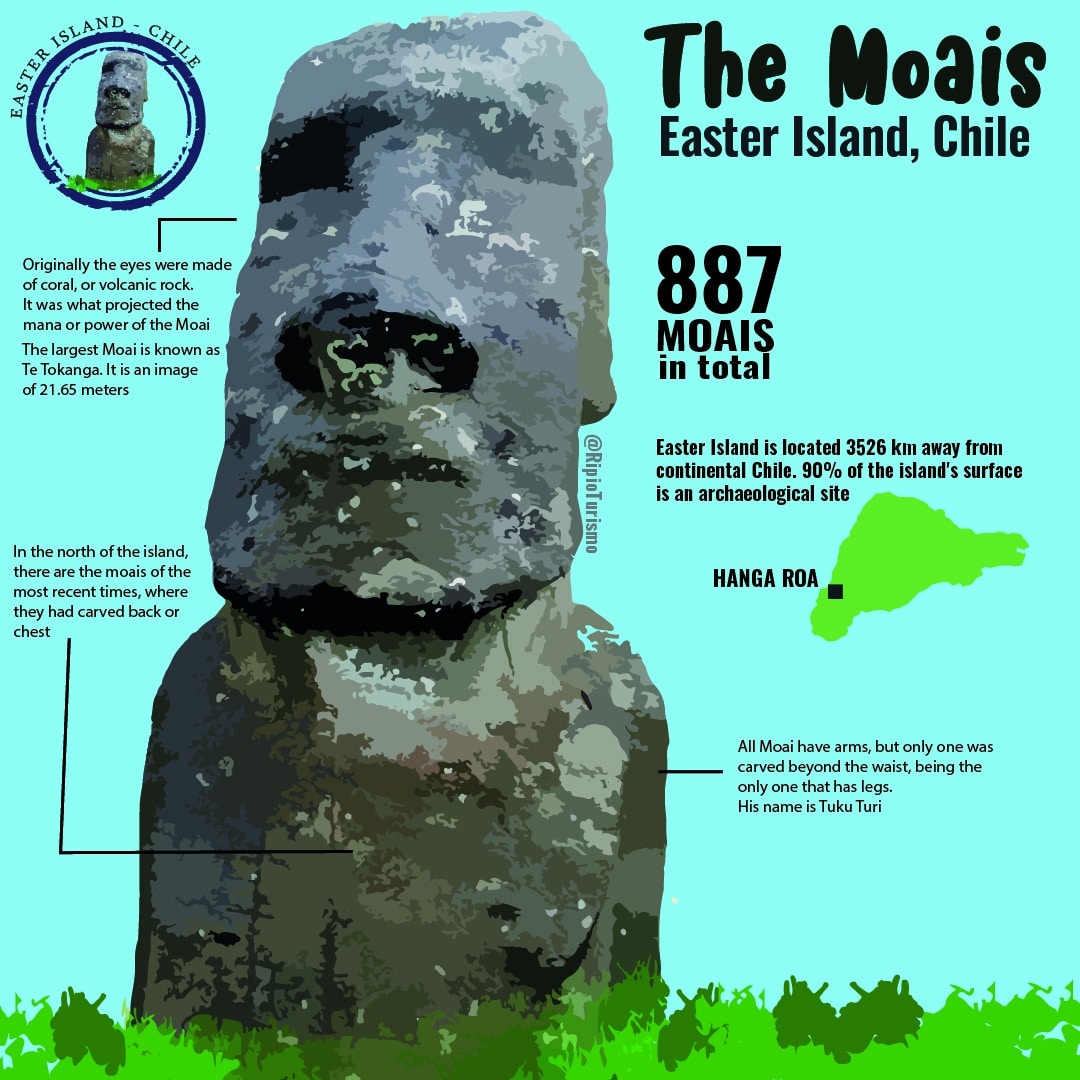
Easter Island map: where are located the Moais on Easter Island?
Well, usually on the coast, and let me say you will find Moais in all over the island. These huge stone heads are scattered throughout the island, and many of the places can be visited by tourists. It is a great attraction for international tourism that comes to Easter Island to meet the Giant Bodies of Easter Island. These giant stone heads are undoubtedly the main attraction of Rapa Nui.
The full name of the statues in their local language is Moai Aringa Ora, which means “living face of the ancestors.” These stone giants were made by the Rapa Nui to represent their ancestors, rulers or important ancestors, who after death had the ability to extend their “mana” or spiritual power over the tribe, to protect it.
Kings possessed this power innately, Others could acquire it in the course of their lives, but for this, they had to perform a series of extraordinary feats, and they were forced to constantly prove it so as not to lose it.
The more prosperous clans ordered the construction of a moai as a way to honor the deceased man with mana. After several months of hard work, the moai made its way to the ahu or stone altar prepared to receive it. Finally, it was erected accompanied by great celebrations.
Another question is how were the Moais built?
The Moais of Easter Island
How were the Moai built?
The statues of Easter Island were sculpted, initially, in basalt, trachyte, and red slag, but shortly after the carvers were fixed on the Maunga Eo volcano (which means “aromatic hill”), better known as Rano Raraku. The grayish-yellow volcanic stone, which occurs exclusively in that part of the island, is a type of compact ash encrusted with basalt. This material, called tuff lapilli, turned out to be more suitable than soft slag or very hard basalt, for the massive construction of statues using simple tools.
Curiously, the northern half of the crater, whose edges descend in a gentle slope, is composed of a reddish clay material that is useless for carving. The lapilli tuff appears in the southern half of the crater, on the highest side, therefore the activity of the ancient moai carvers was concentrated on the outer wall that faces southwest, but they reached the top and even inside the crater, in whose slope more than forty statues are conserved, oriented towards the lagoon.
They began the carving from one side of the image, facing the vertical wall, or down, where there were horizontal surfaces or even quite inclined, with the head up or down. Master carvers carved the stone with basalt or obsidian chisels called “toki” and it is estimated that a team of sculptors could take up to two years to finish a large moai. First the front part was sculpted with all its details except the eye socket.
One of the unsolved mysteries is to know why they did not extract the large rough blocks and take them to a more accessible place so that sculptors could work more comfortably, and instead, they climbed up to the highest and most difficult part of the volcano to carve every detail of the moai, even the fine features of the face and hands, in its place of origin.
In the final phase of the work, the back was chiseled to detach the statue from the bedrock by cutting the keel that remained along the axis of the body. Then, it slid down the slope towards the base of the hill, using logs and firm ropes of vegetal fiber, until depositing the moai in a previously dug hole that allowed it to stand upright. In that position, the carving of the back would be finished and it would be ready and in the position to “walk” to the final destination.
How many Moais are in Easter Island? Where are the Moais located on the Island?
Some 900 moai have been recorded on Easter Island. Of these, about four hundred are found in the Rano Raraku quarry, 288 associated with the ahu, and the rest scattered in different parts of the island, probably abandoned on the way to an ahu. Of the total, more than 800 were carved in Rano Raraku lapilli tuff, 22 in white trachyte, 18 in red slag and 10 in basalt.
Some 164 moai reached the different ahu scattered around the island as forming a sacred ring. A few reached small ahus in the interior, such as Ahu Huri a Urenga and Hanga Kio’e. Sometimes they formed imposing groups, such as the 15 moai at Ahu Tongariki, weighing individual weights of more than sixty tons, the 13 at Ahu Akahanga, or the seven moai of the average type at Ahu Akivi.
The millions of blows from those heavy hand-held picks seem to have stopped in a single moment. Hundreds of moai were left in different stages of carving.
Although in some cases they were abandoned due to technical problems or fractures, it seems that, for some reason, that enormous effort was abruptly interrupted, as if the tools themselves were waiting for the return of the workers at any moment.
Easter Island Location Map: Location of the Moais on the Easter Island

How is a Moai?
In their beginnings, the moai were small, with wider heads and with more natural features and shorter ears, but, little by little, the mastery of the technique was stylizing the figures until reaching the aesthetics of the classic images from the Rano Raraku quarries, which present a clearly defined pattern.
The stereotype of the moai is rectangular in shape, and stands out for the greater proportion of the head with respect to the trunk, with an elongated nose where the fins are detailed with fine spirals, a mouth with thin lips with a contemptuous expression, ears with long lobes, in those that sometimes cylindrical rings are appreciated. The chin has a pronounced edge, sometimes ending in a small beard. The eyes remained “closed” until the figure was lifted onto an ahu.
The bodies were designed so that the statue had a low center of gravity, with a bulging abdomen in the lower third and a concave back. The base is cut at the level of the pelvis, leaving the male genitalia covered by a loincloth at the front. The arms are attached to the body and the hands hold a slightly bulging belly with their thumbs pointing towards the navel, I Pito Te, the womb, which contains the power of life. His elongated and thin fingers symbolize a sacred, untouchable being, not destined for common work, but for reflection and wisdom.
The pectorals have nipples shaped like spirals in relief. Under the thick neck, a line is defined that represents the clavicles, and in the center, the cleft of the upper part of the sternum. The navel is marked in relief, although in most cases erosion no longer allows it to be appreciated. In ancient times, probably all the moai that were raised on an ahu were painted with red mineral pigments. Some feature incised designs representing neck tattoos. In the moai of the Ahu Nau Nau de Anakena, you can see geometric designs in relief applied on the back, such as a belt at the height of the hips, M or Y-shaped designs, as well as spirals on the buttocks.
To which country belongs Easter Island?
The remote Easter Island belongs to Chile, in spite of being part of Polynesia.
Tours to visit Easter Island and enjoy the Moais
We have a wide variety of tours to visit Easter Island. Ony Easter Island, or combined with other amazing destinations in Chile, Argentina and South America in general. Check one of my favorite tours. It´s the #353 tour – Santiago de Chile, Atacama Desert and Easter Island. A wonderful 9-night tour:
More tours to visit Chile
If it´s not for you, don´t worry. We have a wonderful list of tours to visit Chile, including Easter Island or other destinations in the country, or Argentina, Peru, Brazil… Check the complete list of tours to visit Chile








